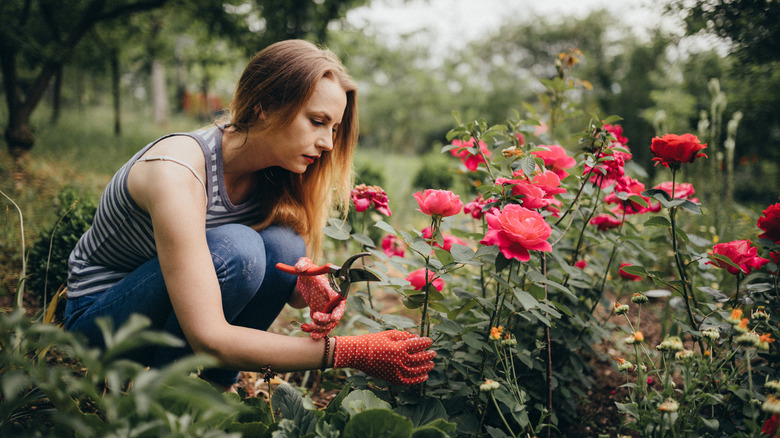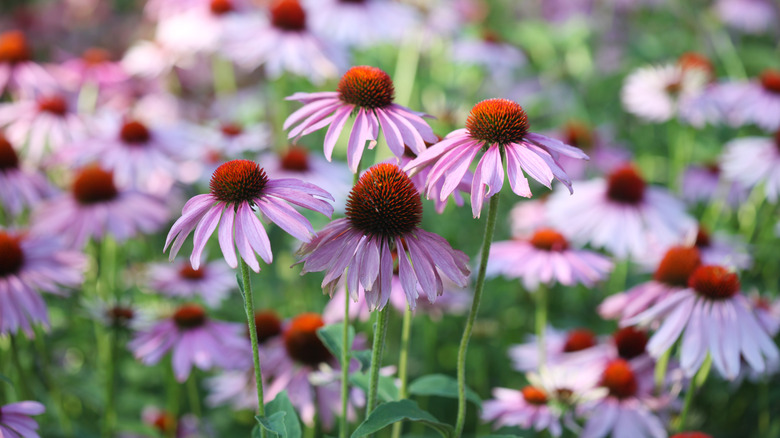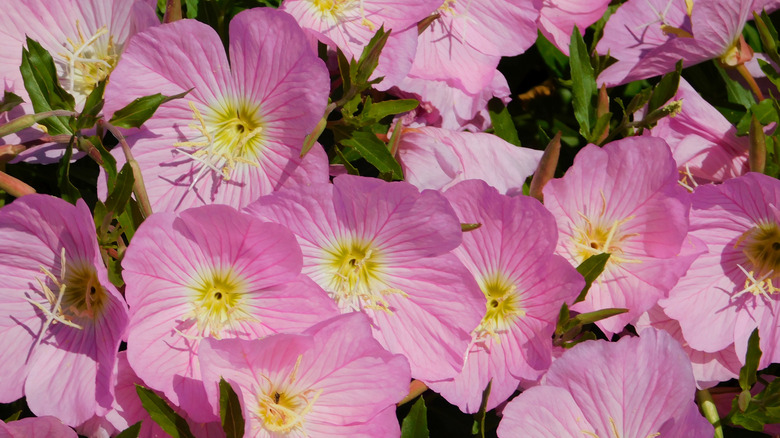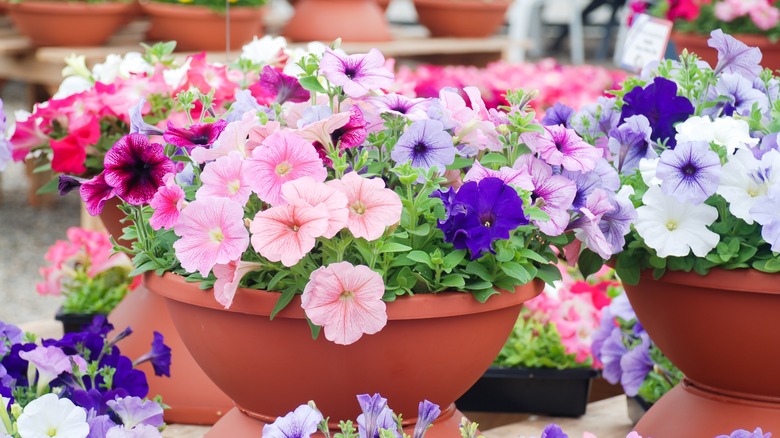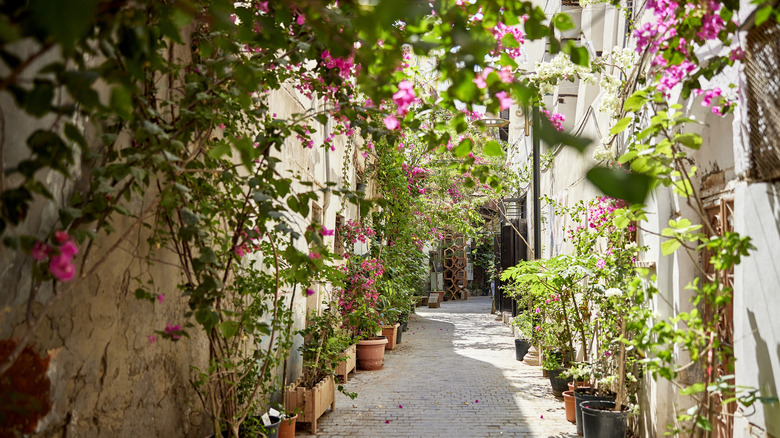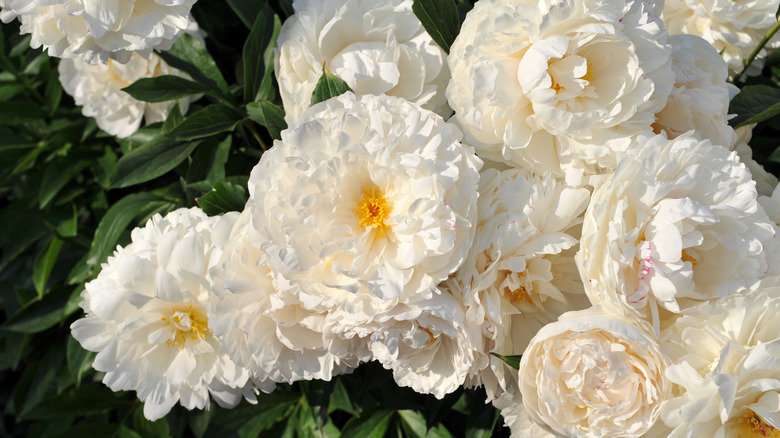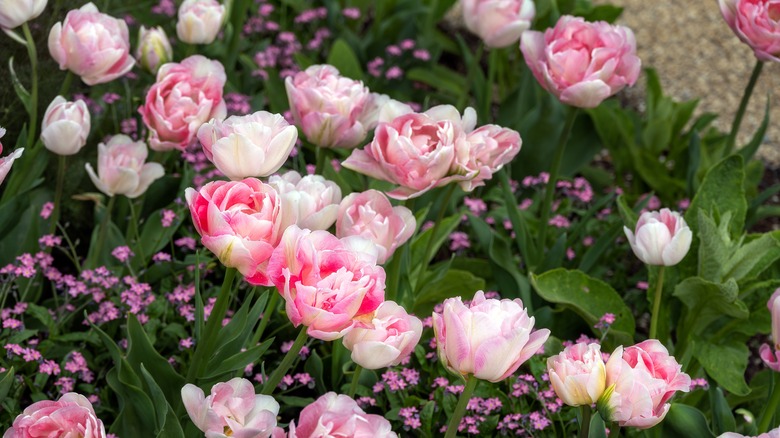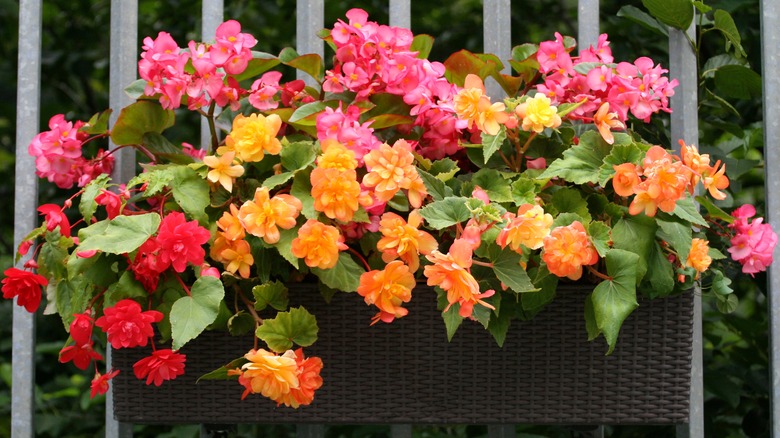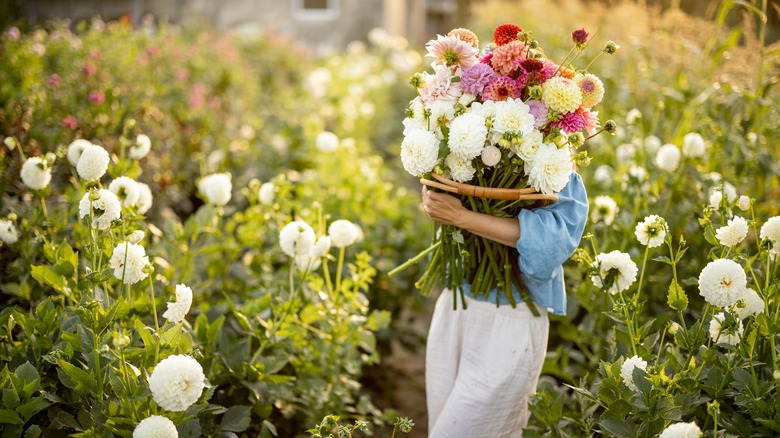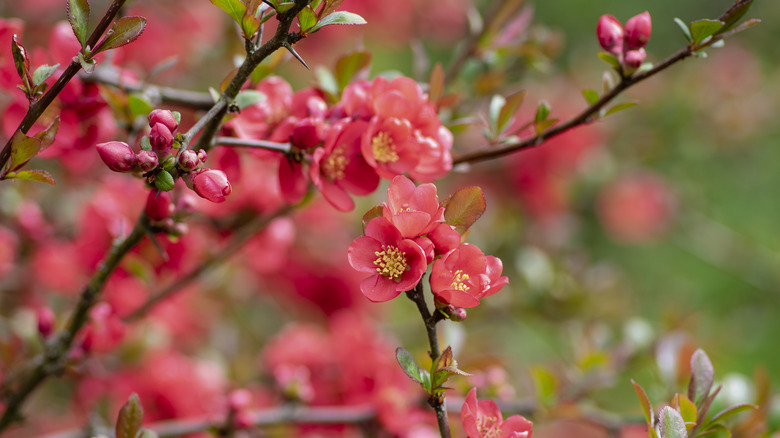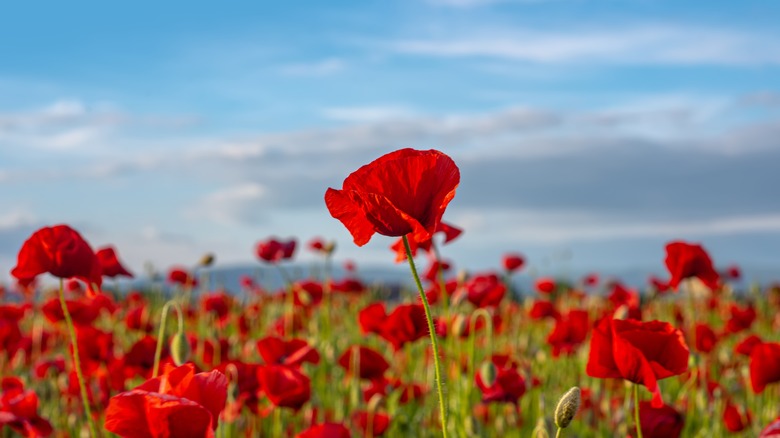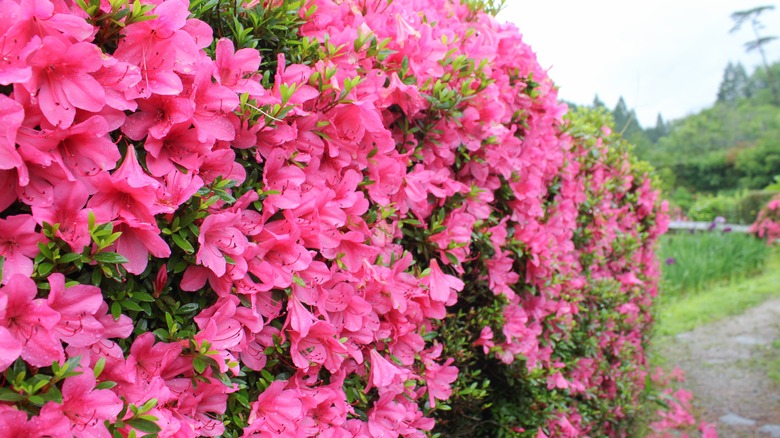Plants That Look Like Roses And Are Easier To Handle In The Long Run
We all love the romantic look of roses, but we have to admit they are not the easiest to grow and maintain. They require a lot of pruning and very specific watering and can be particularly susceptible to disease. Yes, they are beautiful, but they are not the best choice for beginners or for busy people who want to maintain their gardens with minimal effort. Luckily, there are numerous other flowers that look similar to roses, evoking the same feeling while also being much easier to handle during the initial growth phase and in the long run.
Depending on what aspect of roses you love the most, you can choose another plant with those attributes. If you love the elegance of a blooming rosebush, there are other shrubberies that grow beautiful flowers while being less picky about their conditions. If you love the look of roses with their delicate petals arranged in a spiraling circle, other types of flora also have these visual properties. By choosing a plant easier to cultivate than roses, you will ultimately be left with a better result. And you can truly never have too many flowers. If you're ready to create a stunning, rose-inspired garden with ease, here are 11 plants that look like roses but are easier to maintain.
Pink/Purple Coneflower
If you love the colorful petals and visually interesting center of a rose, then you should consider growing coneflowers. These perennials bloom in shades of pink and purple, adding a bold pop of color to your garden. Their raised centers, which look like cones — hence the name — will make them a focal point of your yard. Pollinators like bees and butterflies will flock to your garden, along with other winged creatures like goldfinches known to love coneflowers.
Coneflowers are considered relatively easy to grow and care for, being more drought-resistant than roses. But if you can give them about an inch of water per week, they will absolutely love it. Light composting in the spring will help them bloom to their full potential. However, unless the flowers are small or growing poorly, there is no reason to fertilize regularly. In fact, overfertilizing flowers is a common mistake that can lead to a lot of foliage but with few flowers.
Pink Evening Primrose
The pink evening primrose might only have four petals, but they open with a slight curve that evokes the bell shape of a rose. The saturated pink of the petals seeps into a white gradient towards the center, where a pop of yellow core makes this flower the image of springtime. These flowers open up in the evenings or sometimes when it's overcast, which is perfect if you are busy working during the day and then enjoy sitting in your garden once the workday is done.
Pink evening primroses are drought-tolerant and easy to grow in sunny locations, even if they get as little as two hours of direct sunlight daily. They are very adaptable to different soil types and can even grow in sand or shallow rocks. However, pink evening primrose can sometimes grow a little too easily. Although they are not technically invasive plants, without certain precautions, they can start to spread uncontrollably and overtake a garden. Each bloom drops many seeds, and the plant will grow quickly and heartily year after year. This is great if you want a beautiful, widespread ground covering, but if you have a perfectly organized garden, then the pink evening primrose might be better suited for somewhere else. Mexican primrose, in particular, spreads quickly, but you can greatly reduce these negative impacts by keeping the plant trimmed and cutting off old flower heads before the seeds spread.
Petunias
Petunias are lovely bell-shaped flowers that come in pink, white, red, and yellow — a similar shade palette to roses. They are found in many gardens and on many patios because they are easy to grow in containers or hanging baskets, making them the perfect choice for those who want a romantic garden feeling, even if they don't have an open dirt plot. With proper deadheading, they can bloom continuously from early summer until the weather starts to frost, making them one of the longest-lasting flowers out there.
However, make sure you know what variety you are buying. The Mexican petunia might look like a vibrant purple beauty, but it is considered to be highly invasive. This variety spreads sticky seeds, making it very difficult to control. If you really want to plant this variation, there are clever ways to keep invasive species from spreading, but there are so many variations of petunias to choose from that it is easy to find one that works with the look of your garden and your native environment.
Bougainvillea
Yes, roses are the flower of love, but nothing can be more romantic than sweeping, pink bougainvillea growing over a trellis. If you love the fairytale feeling that roses bring, then bougainvillea is for you. While technically a shrub, it blooms with hundreds of pink and red buds, making it a very floral addition to your home. Because of its ability to grow like a vine, it doesn't have to be confined to a garden, either. It can grow up a trellis or in a pot, and you can even coax the vines to climb up the side of your home.
However, if you live in a cold or cloudy region, you might want to pick another option since bougainvillea thrives with lots of direct sunlight. You'll also need to master rejuvenation pruning annually to encourage new growth. But don't be intimidated by its sprawling size, once established its relatively low-maintenance and its presence will transform any ordinary space into a whimsical retreat.
Peonies
Upon first glance, peonies are easily confused with roses because they both have multiple layers of petals spiraling into a cup-shaped formation. Peonies come in shades of pink, white, and purple and have a very feminine feel to them. However, unlike roses, they are relatively low-maintenance and can provide beautiful blooms for many years. They can thrive throughout cold winters and don't require much pruning or mulching, making them ideal for many types of climates and growing environments.
While they are easy to take care of once established if you are trying to grow peonies from seeds, expect it to take three to five years before they start to bloom fully. Yes, there are other easy-to-care-for, fast-growing flowers if you're impatient, but if you are willing to dedicate the time, you will be rewarded with a garden full of happy flowers that have the same romance and beauty of roses without all the fuss.
Double Tulip
Double tulips, also known as tulip angelique, are packed with petals splaying out into the same bell shape as a rose. As the name would suggest, this type of flower has more petals than an ordinary tulip, adding an extra layer of fullness and dimension. There are many variations, with the Darwin hybrid being the tallest of all tulips. Their long stems make them an excellent choice for a cut flower bouquet or to add some height to your yard.
Double tulips are relatively easy to care for; you just want to make sure they are situated in well-draining soil so the roots don't become waterlogged. The flowers are delicate and can be easily damaged by rain and strong wind, so if you live in an environment with harsh spring weather, you'll want to plant them in an area with some protection. If you want double the petals and double the fun, then the double tulip could be a great addition to your garden.
Begonias
If you love the look of roses on a bush, then begonias are your low-maintenance version. Blooming in shades of pink, red, orange, and yellow, they have the same romantic look as a rose bush and can be similarly trimmed into a variety of shapes. You can grow them in a pot, in the ground, or even indoors making them a versatile choice. No matter where you plant it, you can set your begonia up for success by giving it nutrient-rich, well-draining soil and placing it in a shady area. You only have to water them about once a week, making it a great option for busy gardeners who only tend to their plants on the weekend.
The main issue people have with begonias is the flowers wilting or not blooming. This is normally the result of the wrong amount of sunlight and can be fixed by moving the plant to a place with indirect light/partial shade. Combine that with a proper watering schedule, and you'll have an easy, flowering plant that is just as beautiful and far less thorny than a rose bush.
Dahlias
If you frequently lose plants to pests and diseases, then dahlias are for you. Known to be naturally disease and pest resistant, they can adapt to many growing conditions, making them a great choice no matter where you live. Depending on your region, they can be annuals or perennials. They are annuals if you live in a cold environment, with temperatures dipping to 10 degrees Fahrenheit, but if you live in a warmer climate, they will bloom year after year as perennials.
Dahlias have the same spiraling, geometric look as roses, making them very visually interesting flowers. They are a great option if you are growing flowers for later use in a bouquet. They will grow tall and strong with not too much effort; however, they greatly benefit if you remove the lower leaves. This allows better airflow around the plant, further decreasing the likelihood that it develops a disease caused by moisture buildup.
Flowering Quince
This delicate flowering shrub is a member of the Rosacea family. It is full of colorful blooms in the early spring and serves as a hearty plant year-round. Once established, it is drought-tolerant in the summer and will survive through cold winter temperatures down to minus 25 degrees Fahrenheit. It will tolerate a wide range of soil types and pH levels as long as it is well-draining.
These flowers typically bloom in early spring but can flower as soon as January, adding some much-appreciated color for a vibrant winter garden. They are a great ornamental addition to any landscape and can be pruned into whatever shape you'd like. However, if you want to keep things as low-maintenance as possible, there's no need to trim the shrubs, which will also allow you to enjoy the elegance of their naturally thin branches. Humans aren't the only ones who get to enjoy these early blooms. Hummingbirds and butterflies will also flock to the tree and its nectar-rich flowers!
Poppies
These red-orange, cup-shaped flowers have the same vibrant petals as roses but require far less gardening effort. This is because, as a wildflower, poppies are very self-sustaining. They self-seed, allowing a fresh batch to bloom year after year without much effort from the gardener. Minimal watering is needed, and it can often survive on spring and summer showers alone. However, if you are experiencing severe heat or drought during the summer, they will benefit from a little supplement watering to extend the bloom time.
These flowers shouldn't cause you much trouble, but if you see them in distress, it might be due to an aphid infestation. There are a few ways to get rid of aphids, including as simple of a solution as spraying the plant with regular dish soap and water. But if you can keep the pests away, you will be rewarded with a garden full of beautiful flowers that require almost no effort.
Azaleas
Azaleas are very showy flowers that have large blooms. It is a shrub variety but can thrive if planted in a pot as well. If grown in a garden, it will serve a similar function to a rosebush by creating a hardy focal point that pairs well with other companion plants and flowers. They are relatively drought-resistant and will bloom well year after year if planted in the right location. They like sunlight, but it can't be direct. This might sound like a high-maintenance trait, but they should continue to thrive as long as you plant them somewhere with indirect or partial light.
They are beautiful to look at, but be sure to keep an eye on any pets you let roam the garden. Azaleas are one of many flowers that can be very toxic to pets. If digested, they can cause nausea, vomiting, and even possible seizures if eaten in large enough quantities. So savor these flowers with eyes only.
